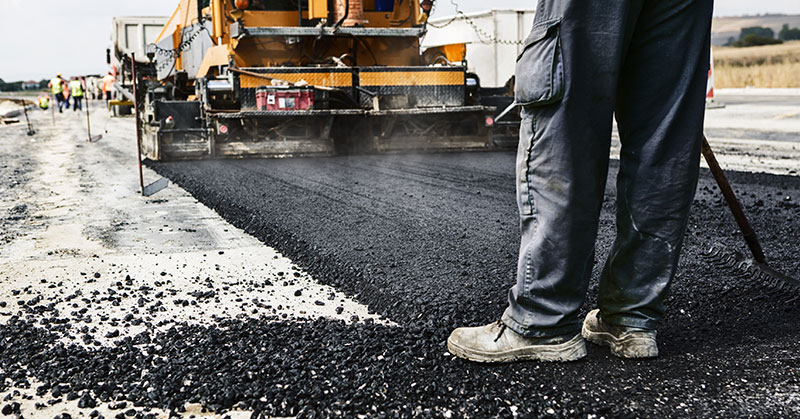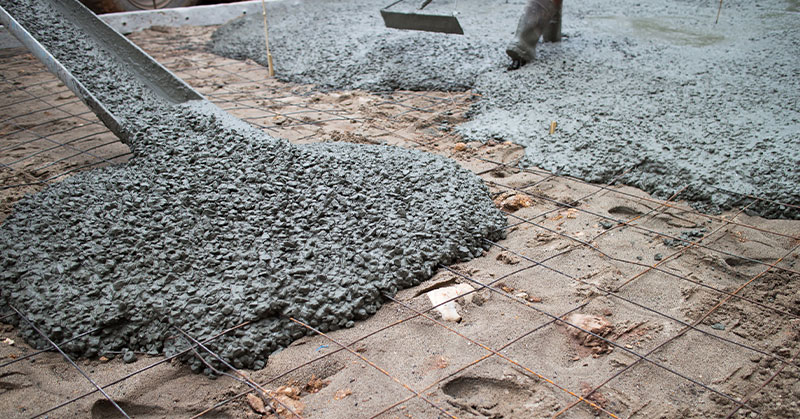
Asphalt
Asphalt is a mixture of crushed stones, sand, and a petroleum-based liquid asphalt. When combined and heated, it’s poured over a subgrade surface. After it cools and hardens, you have a paved surface.
Pros
The pros of asphalt are:
- It’s cheaper than concrete
- You’ll have a useable surface in about 24 hours.
- Asphalt is easier to repair
- Asphalt works great in colder climates
- Hides stains well
Cons
- Doesn’t last as long as concrete
- Needs more frequent maintenance
- May soften in hot climates
Concrete
Concrete is made of gravel mixed with water and cement. Steel bars are added for added strength. Concrete then dries slowly.
Pros
- Lasts longer than asphalt
- Less maintenance
- More attractive
- Aesthetics- you can stain or tint concrete
Cons
- Takes longer to install
- More expensive
- Stains show up more easily
- Performs poorly in cold weather
Things to Consider
As you can see, there are many things to consider when choosing between asphalt and concrete. Which pavement you choose, depends upon your needs, environment, and budget constraints. Plus, making the right choice can save you in the long run. Therefore, it’s important to carefully consider your pavement needs.
For example, you need to consider:
- Cost
- Climate
- Maintenance and Repair needs
- Aesthetic and Design
- Ease of Installation
Conclusion
To make your choice, figure out your needs and your budget. Then, make your choice. Fortunately, you don’t have to make the decision alone. There is help available. If you need more information, a pavement contractor can provide you with more information, so that you can make the right pavement choice. Contact Contractors Asphalt today to find out more information about paving with either asphalt or concrete. We’re here to help you with your Austin pavement needs.
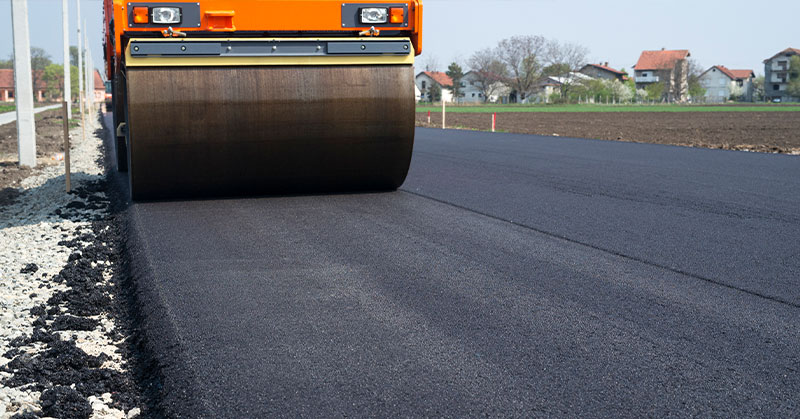
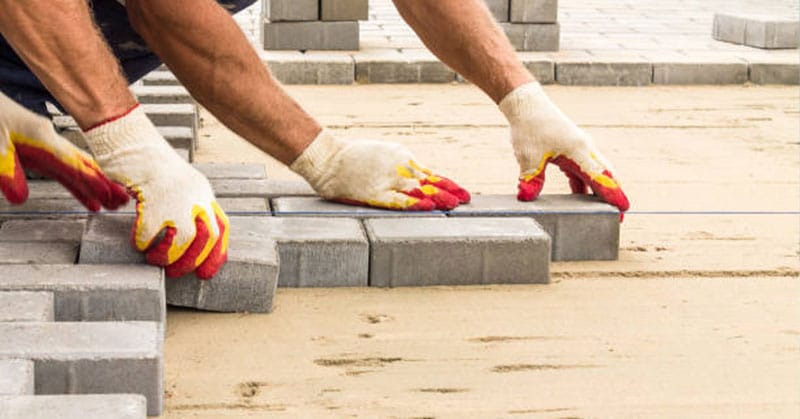
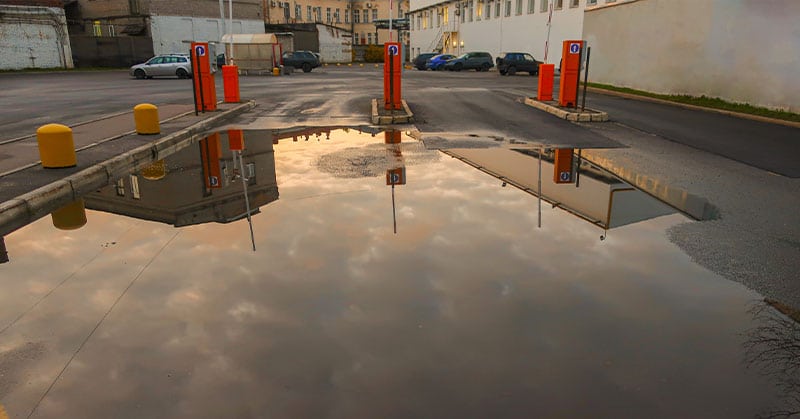
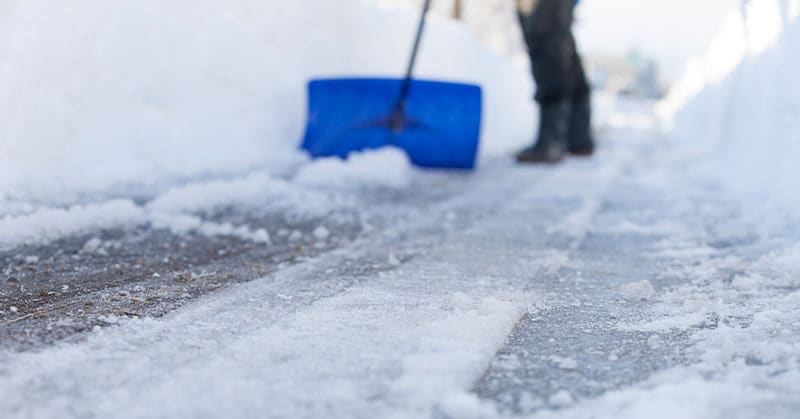


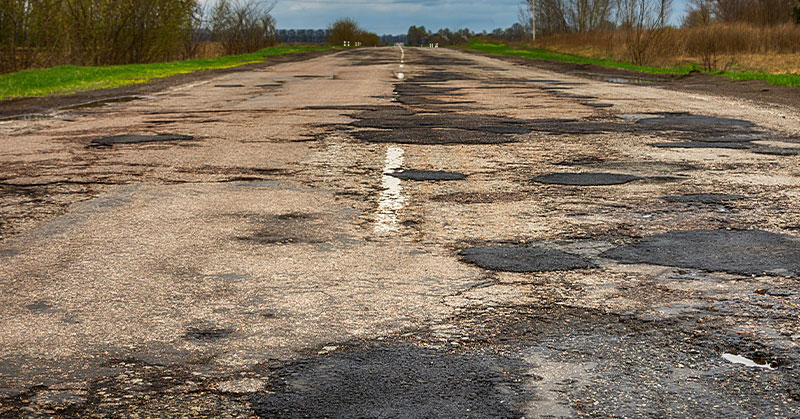 Even the strongest materials eventually need to be repaired or replaced – take concrete, for example. While it’s true that concrete is an incredibly strong, long-lasting paving material, it will eventually need to be either repaired or replaced. Minor problems can usually be easily resolved by a reputable paving contractor. But there are times when repairs aren’t enough, and the surface will need to be replaced completely. Here are some signs that it might be time for an entirely new concrete surface:
Even the strongest materials eventually need to be repaired or replaced – take concrete, for example. While it’s true that concrete is an incredibly strong, long-lasting paving material, it will eventually need to be either repaired or replaced. Minor problems can usually be easily resolved by a reputable paving contractor. But there are times when repairs aren’t enough, and the surface will need to be replaced completely. Here are some signs that it might be time for an entirely new concrete surface: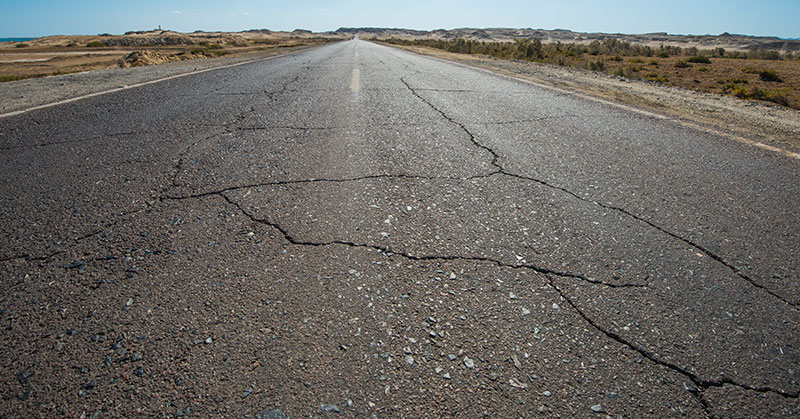 By the time August and September roll around, most of us are ready for the cooler temperatures that come with the fall months. The fact is that long, hot summers take a toll on just about everything, and that includes asphalt surfaces. It’s easy to forget that this remarkably durable paving material isn’t invincible. The truth is that asphalt can be negatively impacted by a variety of weather conditions, and that includes the hot temperatures of the summertime. In fact, asphalt absorbs heat, and that can weaken the surface and lead to damaged pavement. What follows are some of the most
By the time August and September roll around, most of us are ready for the cooler temperatures that come with the fall months. The fact is that long, hot summers take a toll on just about everything, and that includes asphalt surfaces. It’s easy to forget that this remarkably durable paving material isn’t invincible. The truth is that asphalt can be negatively impacted by a variety of weather conditions, and that includes the hot temperatures of the summertime. In fact, asphalt absorbs heat, and that can weaken the surface and lead to damaged pavement. What follows are some of the most 